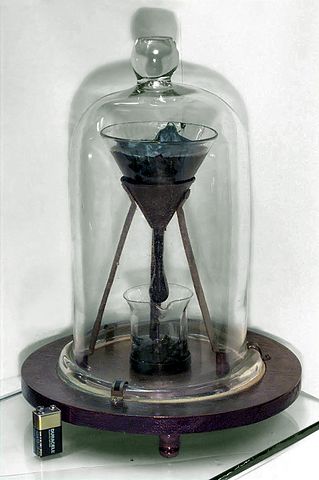Slow Drip

Pick a hot summer day and walk across an asphalt surface — a road, driveway, or parking lot, perhaps — and you may feel the ground moving slightly beneath your feet, almost as if the asphalt surface is some sort of liquid. There’s a reason for this:
It is a liquid.
Asphalt is a type of highly viscous liquid — over 200 billion times more viscous than water — called a “pitch.” It and other pitches are easily mistaken for solids; at room temperature, they look and can be manipulated as such. For example, if one takes a chunk of room temperature asphalt and strikes it with a blunt object, the asphalt will actually shatter.
But in that case, science is playing a trick. Pitches are, despite the above, liquids. Take some pitch (at room temperature), put it in the top of an hourglass, and slowly but surely, it will drip into the bottom bulb. The key is patience, as each drip will take years to form and ultimately fall. We know this because Thomas Parnell, a professor at the University of Queensland in Australia, decided to try it — in 1927. The experiment, seen above, started in earnest in 1930 (when the seal between the two bulbs was cut; Parnell gave the pitch three years to settle) and is still running. The eighth drop fell on November 28, 2000, and researchers estimate that there is enough pitch remaining to last for at least a century more.
If you want to watch the hourglass, there is plenty of time — and you do not even need to leave your seat. The University of Queensland has a live camera on the pitch drop experiment, available here (but don’t expect to see much action).
Bonus fact: You may be familiar with the term “pitch black,” meaning “extremely dark.” It comes from pitch. Pitch has a deep black hue to it, making it one of the darkest things known to man.
From the Archives: Add Gas, Get Cash Back: The story of another black liquid.
Related: Making your own pitch drop experiment would be tough, but combining these two things may come close.

Leave a comment